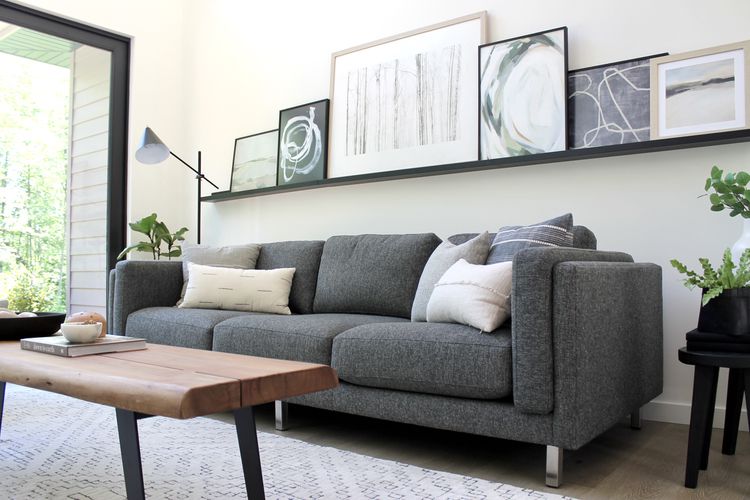
When embarking on a new decorating endeavor, selecting the color of your sofa as the initial step is crucial, as it sets the tone for the rest of the space. This is an excellent opportunity to pick a standout sofa, perhaps covered in a rich, luxurious fabric or a bold pattern, which can serve as the centerpiece of the room. If you’re incorporating a sofa into an existing color scheme or decor, or if you’re on the hunt for a striking addition, think about whether the sofa should be a neutral tone or if it should serve as an accent piece in the overall design.
A prevalent strategy involves selecting a sofa that harmonizes with the surrounding decor, ensuring it neither dominates the space nor blends into the walls. While neutral tones are typically preferred in many households, bold colors are gaining traction. Continue reading for advice on selecting the ideal sofa color for your living space.
Contents
Tip
Certain designers prefer choosing a sofa that complements the wall color to create a cohesive and spacious feel in the room, whereas others choose a sofa in a bold color that stands out against the walls.
Trendy Sofa Shades
Here are several of the most favored sofa hues and the reasons they complement various home styles effectively.
- A gray sofa offers versatility, complementing a wide range of colors, including navy, pink, cream, and even surprising shades of purple. A lighter gray can bring a sense of tranquility to a space, while a darker gray fosters a warm, inviting atmosphere.
- A green sofa exudes a sense of boldness and opulence, adding richness and vibrancy to any living room decor. Combine it with shades of pink and cream, and for a touch of luxury, opt for a sumptuous emerald green velvet.
- Pink, often regarded as the modern neutral, brings a gentle touch to a space, particularly when light and blush shades are combined with cream, black, and brown tones.
- Blue is a favored choice for sofas, yet the wide range of shades available requires thoughtful deliberation on whether you lean towards a subtle, neutral tone or a vibrant, eye-catching blue.
- Cream: This soft and neutral hue of a cream sofa complements a variety of textured neutrals and pairs beautifully with colors like blue, yellow, and pink.
- A black sofa conceals stains and is ideal for creating a sophisticated, dramatic, and atmospheric living room vibe.
- Beige: This timeless hue for sofas continues to be favored for a reason—its warm and inviting tone is highly adaptable and stands the test of time in any style or color scheme of a living room.
- A brown sofa seamlessly complements various design styles, ranging from rustic to traditional. The timeless camel leather sofa exemplifies this versatility, as this dependable neutral tone harmonizes beautifully with wood and other organic materials.
- A navy blue couch is a highly adaptable choice, exuding warmth and a welcoming vibe. It complements a wide range of color palettes, from neutral shades to vibrant jewel tones.
- Teal: This intense and lively deep blue-green shade exudes both boldness and tranquility, making it an excellent option for a living room with a traditional, eclectic, or bohemian flair. Combine it with white, cream, and, for a daring touch, a hint of orange.
- A luminous white sofa complemented by blue accents evokes a coastal atmosphere and harmonizes beautifully with cream tones and deeper neutrals for a contemporary aesthetic.
Bright vs. Dark Upholstery
After determining whether your sofa will serve as an accent piece or a neutral tone, the next step is to choose between a lighter or darker shade. Here are a few factors to keep in mind.
Factors to Consider When Choosing a Dark Sofa
The type of flooring you have can influence your decision between a light or dark sofa. A dark sofa on a dark floor might blend in too much, potentially making the room feel much darker. There are three solutions to address this problem.
- Choose a sofa that features metal or light wooden legs to enhance the brightness of the room and establish a sense of openness between the sofa and the flooring.
- Place a rug in a lighter shade beneath the front of your sofa to create a contrast with the darker hues and enhance the sofa’s color.
- Select a coffee table made of light wood or metal to create a visual distinction between the sofa and the flooring.
Factors to Consider for a Light-Colored Sofa
One of the main difficulties of owning a light-colored sofa is the tendency for stains and dirt to build up on the fabric. If you have children, pets, or often host guests but still desire a light sofa, the ideal way to maintain its cleanliness is to choose a chic, washable slipcover.
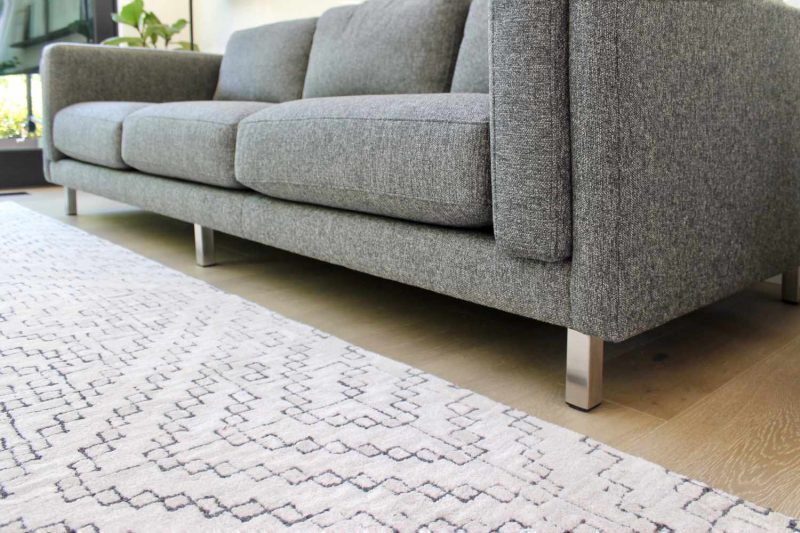
Frequent Mistakes
Prior to purchasing a new sofa, it’s essential to measure your space to guarantee that you select the appropriate size. Failing to do so may result in a couch that appears mismatched or uncomfortable in your room.
Selecting the Perfect Color for Your Sofa
Select a few shades from the color palette of your living room to identify the ideal color for your sofa. Even if your living room features a neutral palette, you can still incorporate color. Introduce accessories or patterns that belong to the same color family to distribute the shades throughout the space. Using similar colors in various elements creates a sense of harmony, allowing the sofa to feel cohesive, even when using more vibrant tones.
Choosing a sofa fabric in a neutral shade is an excellent choice due to its classic appeal. A neutral fabric allows for versatile decorating with various color palettes, eliminating the necessity to purchase a new sofa. Here are some neutral options to consider for your sofa:
- Beige: A beige sofa fabric may seem bland when paired with other hues, so opt for a textured beige material that incorporates subtle monochromatic specks to add visual appeal.
- Gray sofas are viewed as elegant, stylish, and fresh, available in shades that vary from light to dark charcoal.
- Taupe is a hue that sits between brown and gray, offering a flexible option that can be classified as either a warm or cool neutral.
- A cream sofa can exude sophistication, but it may appear bland in a space unless complemented by additional earthy hues, creating a serene and refined atmosphere.
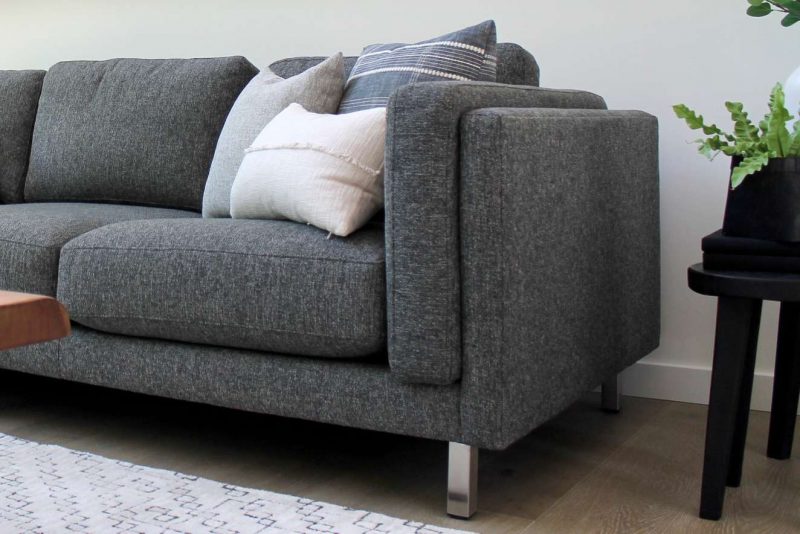
Final Details
Enhance your space with the new sofa by incorporating some final details. If you’re looking for extra seating without opting for a matching loveseat, consider a set of upholstered chairs that complement the sofa’s color. Introduce accent pillows and throws to infuse your living room with vibrant touches, creating a cohesive and stylish atmosphere.
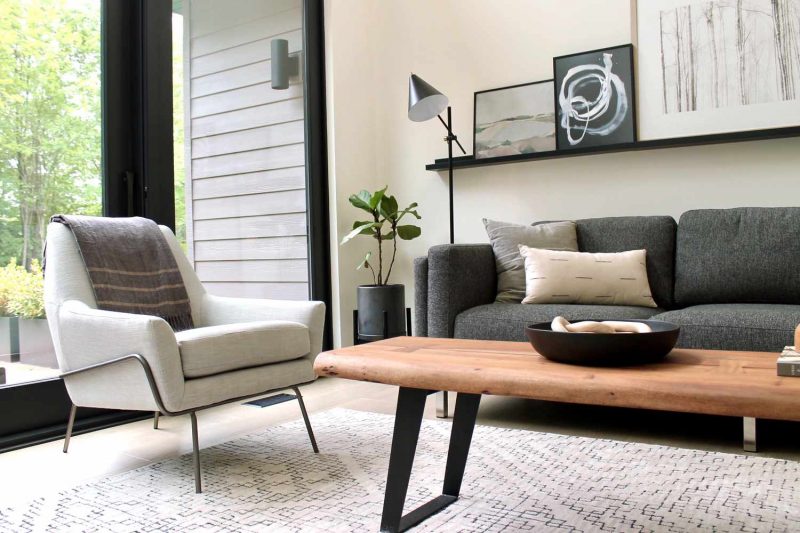
Top Sofa Selection
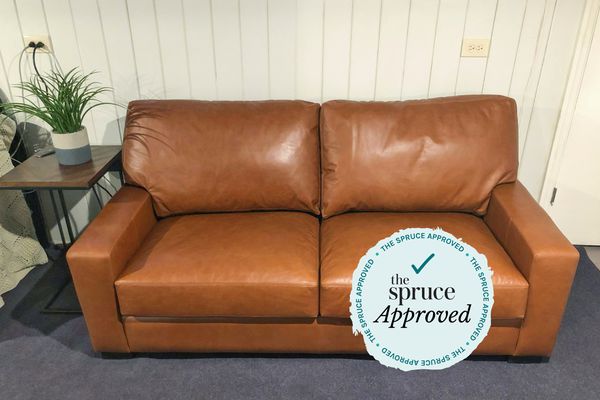
After extensive testing of various couches, we have identified these eight as the top choices.
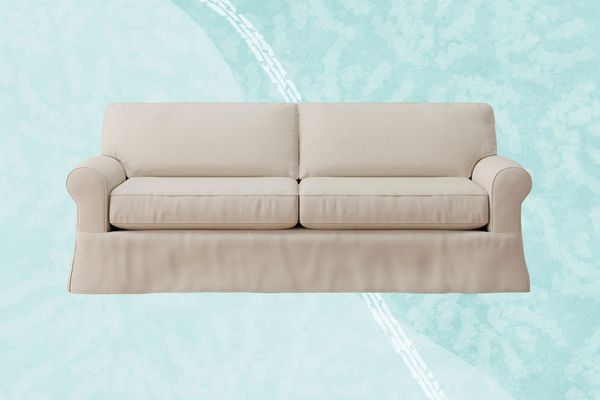
The Top 11 Sofas with Slipcovers

Top-Rated Sectional Sofas, Evaluated for Aesthetics and Longevity
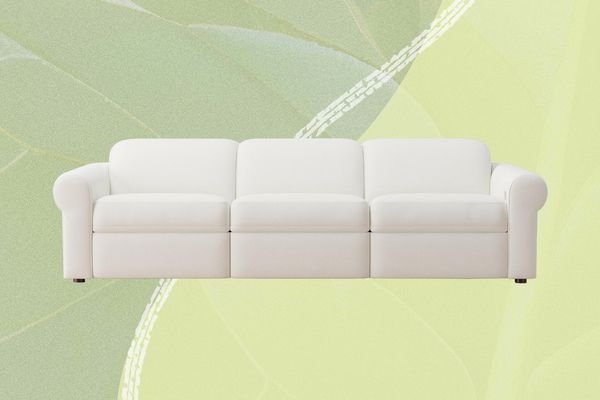
11 Reclining Sofas We Adore for Every Style of Interior Design
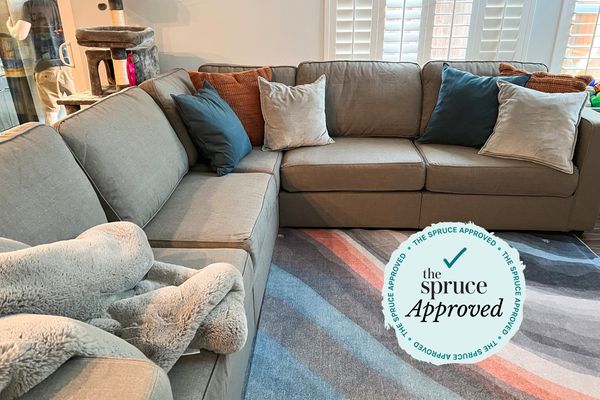
The Top 7 Modular Sofas
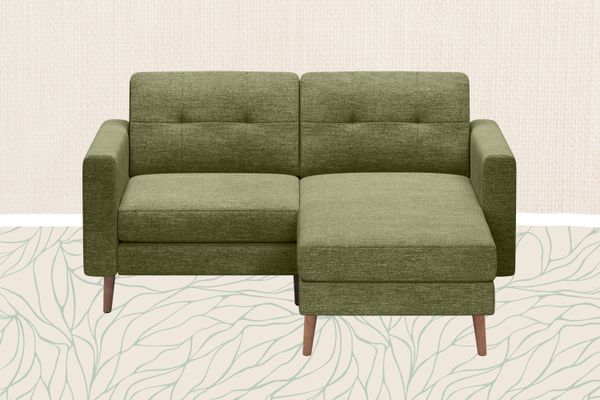
The Top 14 Locations for Purchasing Mid-Century Modern Sofas What is the most favored color for a sofa?
Neutral shades such as gray, beige, brown, and cream continue to be the favored options for sofas due to their practicality and adaptability. Additionally, blue consistently ranks as a popular selection.
Which sofa color can create the illusion of a larger space in a room?
A sofa in a lighter shade can create the illusion of a more spacious room by occupying less visual area. To enhance the perception of size in a room, a sofa that matches the lighter tones of the walls can help to visually expand the space. Conversely, in a living room adorned with darker colors, a sofa that complements the walls and flooring can add remarkable depth, making the area feel more expansive.
Which sofa color is the simplest to maintain?
Deeper hues and patterned materials are the most convenient to maintain, as they effectively conceal various spills and blemishes.
Should your sofa be a lighter or darker shade compared to the walls?
Opting for a sofa that is a deeper shade than the walls will establish a harmonious appearance in your living space. Conversely, in a spacious room with dark walls, a lighter sofa can enhance the sense of warmth and comfort.
Which sofa color remains timeless?
Timeless shades such as beige, soft brown, and cream remain perpetually fashionable. Opt for these hues rather than more fleeting trends, and your sofa will always look current.

